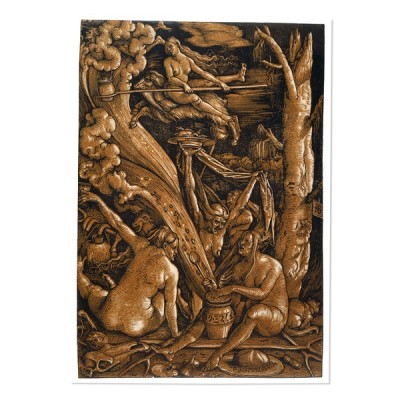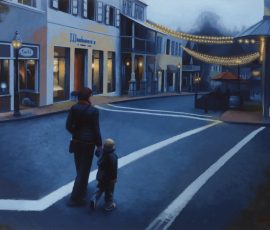In my book, it is officially fall when the kiddies go back to school. Such a joyous time – bouquets of freshly sharpened pencils, unscuffed erasers, and pristine pages of lined paper. But more importantly, fall brings warm scarves, cozy sweaters, fabulous boots, warm lattes, apple pie, and hot batches of soup. Fall is my favourite time of year.

A Perfect Fall Day, www.pinterest.com
With fall, comes Halloween -what I think is a very under-appreciated holiday. I love the magic, wonder, and mystery that comes with all hallows ‘eve. In fact, the folklore that has become iconic with Halloween – wolverines, ghosts, zombies, and witches – holds a significant place in the history of art.
The subject of witchcraft became more and more popular in the late fifteenth century with the development and establishment of the print industry. In these periods, witchcraft was believed to be mainly associated with women. The history of witchcraft dates back to prehistoric times. There is evidence that suggests people of ancient Greece and Rome believed in witchcraft and felt threatened by malevolent beings that practiced something similar to witchcraft. There is a being that was believed to exist in antiquity called Lilitu. Lilitu was presumed to be a barren female apparition who would fly through the night air accompanied by owls in search of men whom she would seduce and then drink their blood. This is where we get our modern day imagery of wretched old women flying through the air on broomsticks.

Iconic Witch Imagery, www.pinterest.com
Albrecht Dürer and Hans Baldung Grien are some of the most well known artists of the fifteenth and sixteenth century for their depictions of witches and the dark arts. One of the earliest prints to portray witches involved in witchcraft is by Albrecht Dürer, called The Four Witches. Some aspects of the work relate to classical art, for instance the three women are reminiscent of the Three Graces. Often in witch imagery the woman’s hair can symbolize chaos and uncontrollability. Hair in witch imagery may also be a reference to magic, to the sexual nature of women, or as a veneration of their own bodies.
Baldung was very interested in the iconography of witches. A student under Dürer, he portrayed women as witches and related his images to the humanist interests of the time. In Witch’s Sabbath, Baldung portrays a gathering of witches of many different ages. Many of the women are very old and ugly, others are young and beautiful and others are mature. This print also shows the female nude in the presence of nature. The earthy nude is usually depicted with larger thighs and hips, these body types naturally exemplify the idea of procreation. The mystery and power of the earth is manifested in the women, and their ability to continue the life cycle.
In this period, many people blamed witches and witchcraft for natural disasters or for extreme weather events. Women who were accused of witchcraft were used as scapegoats. Since there was no logical reason or understanding of the weather, people blamed the unpredictable and often extreme events of weather on witches. In Dürer’s Witch Riding Backwards on a Goat, the portrayal of the powerful woman, full of anger, is meant to show her power of the weather, and her ability to wreck havoc.
.jpg)
Albrecht Dürer, Witch Riding Backwards on a Goat, 1500, www.wikipaintings.com
The images we see today of witches and warlocks, that we can look upon and laugh at, were once images meant to warn men. It was a scene out of a Monty Python skit – men accusing a woman of possessing power out-of-this-world, with no evidence to back it up, and then using (a use the word loosely) math, involving ducks to determine her true level of humanity.

Monty Python, "She's a Witch!", www.justinangel.net
So, before casting off the tales we were told as children – question them more and believe them more. Who knows? Perhaps I am casting this blog to you from my wireless cauldron. Ooooooooooo!
Related articles










Comments (0)